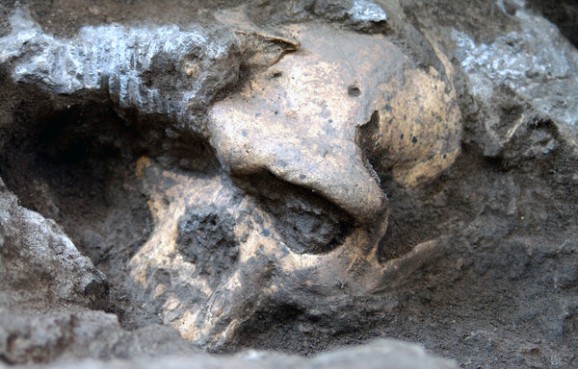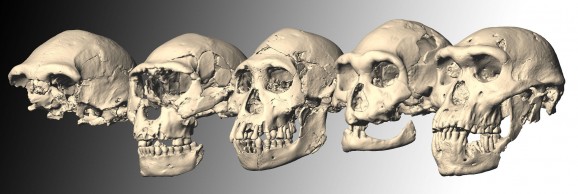Ancient Hominid Skull Suggests The Story Of Human Evolution Need Rewriting
This article is more than 2 years old
 It seems we don’t know as much about ourselves as we thought. First, we learn that we all may be Martians. Now, new evidence suggests that early hominids—Homo erectus, Homo rudolfensis, and Homo habilis—may all have actually be the same species.
It seems we don’t know as much about ourselves as we thought. First, we learn that we all may be Martians. Now, new evidence suggests that early hominids—Homo erectus, Homo rudolfensis, and Homo habilis—may all have actually be the same species.
Eight years ago, archaeologists unearthed a human skull in the Republic of Georgia. Since then, scientists from across the globe have studied the skull, trying to figure out exactly what hominid species it belongs to. The surprising results challenge what we’ve long held true about human evolution—namely, that early hominids could be classified into different species indicating evolutionary steps along the way to Homo sapien.
The analysis of the 1.8 million-year-old skull, which researchers call “Skull 5,” suggests that it demonstrates contradictory features of both primitive (a long face) and more evolved (a smaller braincase) hominid species. In fact, scientists were unable to classify the skull according to long espoused species distinctions. The bones also contains no significant differences from other early hominid skulls found at the same site—researchers compared the variations to those that exist between modern humans or chimpanzees. In short, they believe all of the fossils are from the same species.
Even though archaeologists recovered Skull 5’s cranium and jawbone five years apart, scientists are sure they belong to the same head. They think Skull 5 belonged to a male, and that his limbs and torso were proportioned similarly to modern humans. Researchers also believe that the owner had arthritis and at some point fractured his cheekbone.
 This is the first complete adult skull recovered from the Early Pleistocene era, but the four other skulls found with it, as well as tools and animal fossils, are important as well. Everything they found at the site dates back 1.8 million years, which means that instead of studying a single sample, researchers had a sample group, which provides a unique opportunity to study the skulls in context. The ability to examine all five specimens next to each other made the differences stand out. The variations can all be attributed to hominids that lived 2.4 million years ago in Africa to hominids that lived 1.2 million years ago in Asia and Europe.
This is the first complete adult skull recovered from the Early Pleistocene era, but the four other skulls found with it, as well as tools and animal fossils, are important as well. Everything they found at the site dates back 1.8 million years, which means that instead of studying a single sample, researchers had a sample group, which provides a unique opportunity to study the skulls in context. The ability to examine all five specimens next to each other made the differences stand out. The variations can all be attributed to hominids that lived 2.4 million years ago in Africa to hominids that lived 1.2 million years ago in Asia and Europe.
Researchers will continue to dig at the site, hoping to find more to study, and more proof that early hominids are actually a single Homo species. The find is likely to jumpstart a new debate on human evolution. Maybe someone will be inspired by talk of cloning a Neanderthal and decide to look for some viable hominid DNA to settle the matter once and for all.












